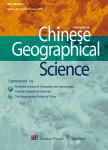Trends of Urban Air Pollution in Zhengzhou City in 1996-2008
Trends of Urban Air Pollution in Zhengzhou City in 1996-2008作者机构:Institute of Geographic Sciences and Natural Resources Research Chinese Academy Sciences Beoing 100101 China' Graduate University of Chinese Academy of Sciences Beijing 100049 China The Second Battalion ofNon-ferrous Metal Geology and Mineral Resources Bureau Zhengzhou 450016 China Institute ofNatural Resources and Environmental Science Henan University Kaifeng 475004 China)
出 版 物:《Chinese Geographical Science》 (中国地理科学(英文版))
年 卷 期:2012年第22卷第4期
页 面:402-413页
核心收录:
学科分类:02[经济学] 0202[经济学-应用经济学] 020208[经济学-统计学] 07[理学] 070602[理学-大气物理学与大气环境] 0706[理学-大气科学] 0714[理学-统计学(可授理学、经济学学位)] 070103[理学-概率论与数理统计] 0701[理学-数学]
基 金:Under the auspices of National Natural Science Foundation of China (No. 41071063)
主 题:urban air pollution Mann-Kendall test Sen's method Multi-Pollutant Index (MPI) Zhengzhou
摘 要:Urban air pollution is a commonly concerned environmental problem in the world. Identification of air quality trend using long-term monitoring data is helpful to understand the effectiveness of pollution control strategies. This study, using data from six monitoring stations in Zhengzhou City, analyzed the changing trend in concentrations of SO2, NOJNO2 and TSP/PM10 in 1996-2008, based on non-parametric Mann-Kendall test and Sen's slope estimator, and evaluated the comprehensive air pollution level using Multi-Pollutant Index (MPI). It was found that the concen- tration of each pollutant exceeded obviously the World Health Organization (WHO) guideline value, but the changing trend varied: SO2 and NO2 were significantly increased mainly due to an increase in coal consumption and vehicle number, while NOx, TSP and PM10 decreased. The air pollution was serious, and differed markedly among the three functional regions: it is the most severe in the Industrial and Residential Area (IRA), followed by the Transportation Hub and Business District (THBD), and then the High-tech, Cultural and Educational Area (HCEA). Different from NO2 concentration that had a similar change trend/rate among the function regions, the change rate of PM10 concentra- tion differed spatially, decreased much more obviously in THBD than other two regions. For the whole city, the com- prehensive air pollution level declined gradually, illustrating that the air quality in Zhengzhou was improved in the last decade.



